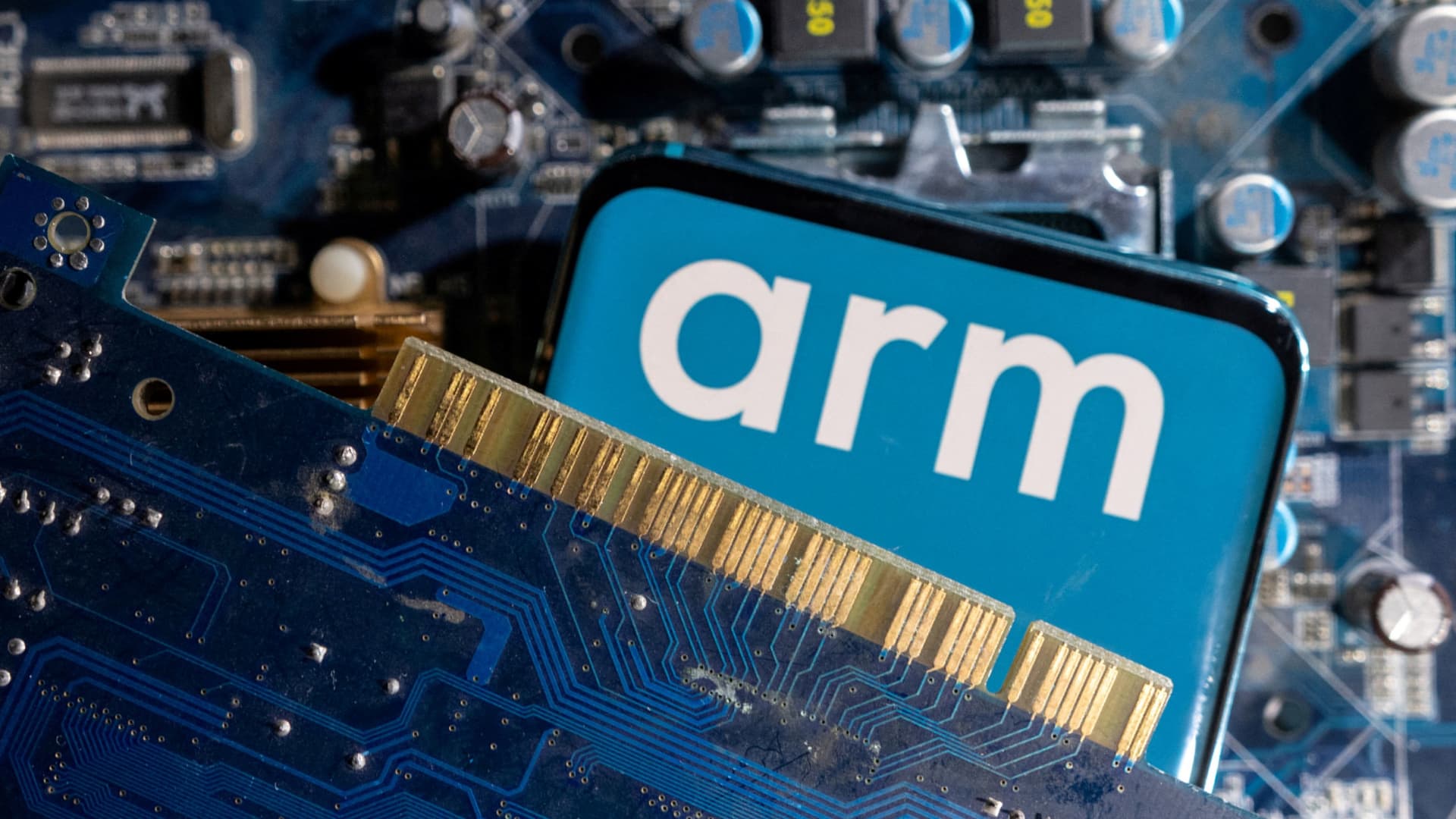
Shares of Arm , the British chip design company founded in 1990, will begin trading in New York for the first time after being taken private by SoftBank in 2016. Arm licenses its proprietary chip designs to major semiconductor companies and device makers such as Apple and Nvidia. The company charges its customers an upfront fee and a percentage of revenue per unit sold. With the initial public offering expected to value Arm at up to $54.5 billion , investors are debating whether to buy shares when trading starts on Sept. 14. Analysts have expressed both optimism and caution on Arm’s growth prospects and valuation. Most analysts believe Arm benefits from strong secular demand trends in artificial intelligence, data centers, and automotive and Internet of Things markets. However, they also note risks from competition like RISC-V, an open standard chip architecture, and customer concentration — with the top five customers generating over 50% of revenue. The loss of any of these customers could lead to a material impact on revenues. China risks Analysts have also noted Arm’s limited control over its China joint venture, Arm China, which contributes 24% of revenue. “Arm’s somewhat black-box relationship with Arm China raises execution risk,” said Rohit Kulkarni of Roth MKM in a note to clients on Sept. 1. “Plus, Arm can only sell to China customers via the Arm China channel, and they can offer competing product. With no direct stake in Arm China, they currently have very little control over their only means to sell in China.” Arm has admitted in its filings that there are ” significant risks ” to its business through its setup in China. Valuation Analysts at New Constructs have also challenged Arm’s valuation. They suggest that SoftBank, Arm’s owner, has inflated the company’s value through self-dealing private investments. SoftBank acquired 25% of Arm shares it did not directly own from the SoftBank Vision Fund, which it partly owns and operates on behalf of other investors. “We think it is fair to say that the nearly $49 billion valuation mark is based more on SoftBank’s self-dealing in private markets to manipulate the valuation higher than the fundamentals of the company,” New Constructs analysts said in a scathing note to clients. Growth Analysts at Bernstein were also cautious, while expecting cloud, automotive, and mobile royalties to drive healthy top-line growth for Arm. “We increased our overall top line revenue 2022-33 [compounded annual growth rate] from 8% to 11%, driven entirely by an increase in growth in royalty revenues,” said Sara Russo in a note to clients on Aug. 31. Russo raised her valuation for the company to $46 billion from $40 billion, though it’s still below the Arm valuation expectation of up to $54.5 billion. Russo also pointed to Arm’s drop in profitability in 2022 as a worrying sign that margins may take longer than expected to recover. “We believe this can be understood by R & D spend being driven primarily by employee costs, spend that is challenging to flex in the face of cyclical market downturns like the one we are currently experiencing in mobile,” she added. Cost control Redburn Atlantic’s analysts said Arm’s revenue projections require rapid royalty rate increases and tight cost controls beyond historical precedents. That led analyst Timm Schulze-Melander to model slower growth than Arm’s 20-25% royalty CAGR (compound annual growth rate) target. Schulze-Melander also believes Arm will struggle to reduce costs as it promotes a new design during a downturn in the sector. In 2021, the company announced its ARMv9 Instruction Set Architecture (ISA), which semiconductor manufacturers will use to make chips for the data center, a new segment of growth for Arm. “Taken together, selling the v9 ISA and supporting customers to bring v9 products to market could mean operating expenses prove harder to control than we currently forecast,” he added in a note to clients on Sept. 11. — CNBC’s Michael Bloom contributed to this report.




